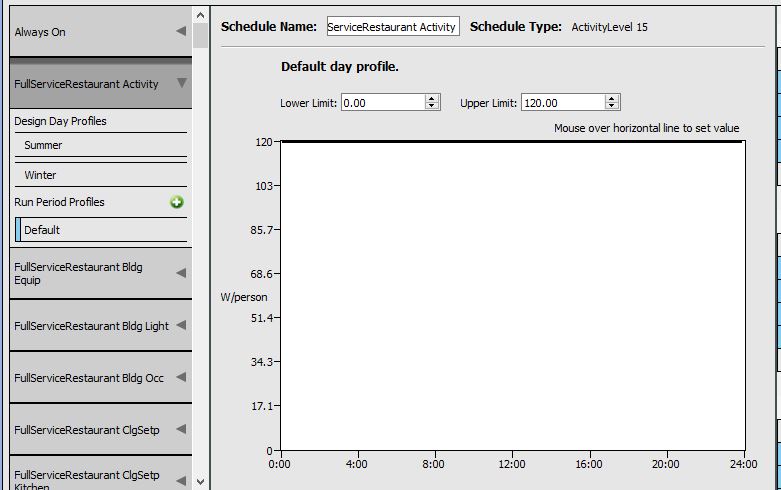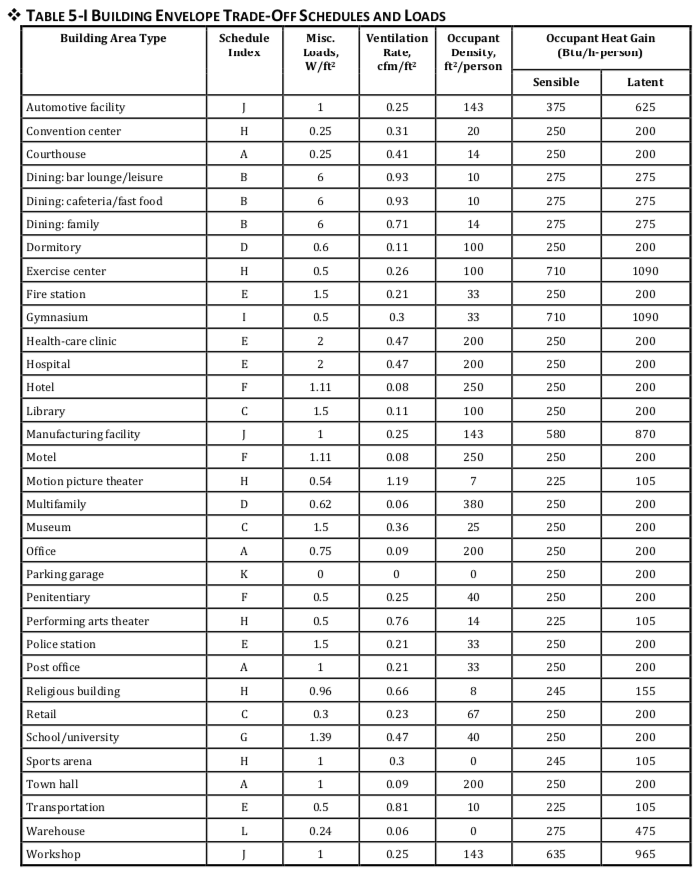Why are people activity schedules all preset to 120 W/person?
Hello,
If this is baseline ignorance I apologize but I've exhausted my research options in trying to find out the answer to this question. In looking through the Input/Output file HereI got a good understanding of the sensible heat fraction that will go to dividing up the people activity into latent and sensible loads. But here are my questions.
how well does the autocalculate end up representing the ASHRAE values for people loads, for example, office being 250 Btu/h sensible and 200 Btu/h latent yet in OS the equivalent would be to set the people activity to approximately 120 W/person and then let the "autocalculate" do its magic to turn that into sensible and latent loads to the space?
When I pull library templates for all the different 90.1 - 2010 space types, the associated people activity schedules are all set to the same 120 W/person. I figured the "small hotel exercise" would want to take credit for people more vigorously moving than a lobby or private office would. Is this just up to the user to override? If that is the case then how is the "create baseline model" measure going about getting these people loads correct?
Again, I've searched a lot to try and find other attempts at answering this question and come up empty so if this is answered somewhere else I'll happily accept being pointed in that direction!
Thank you all!







